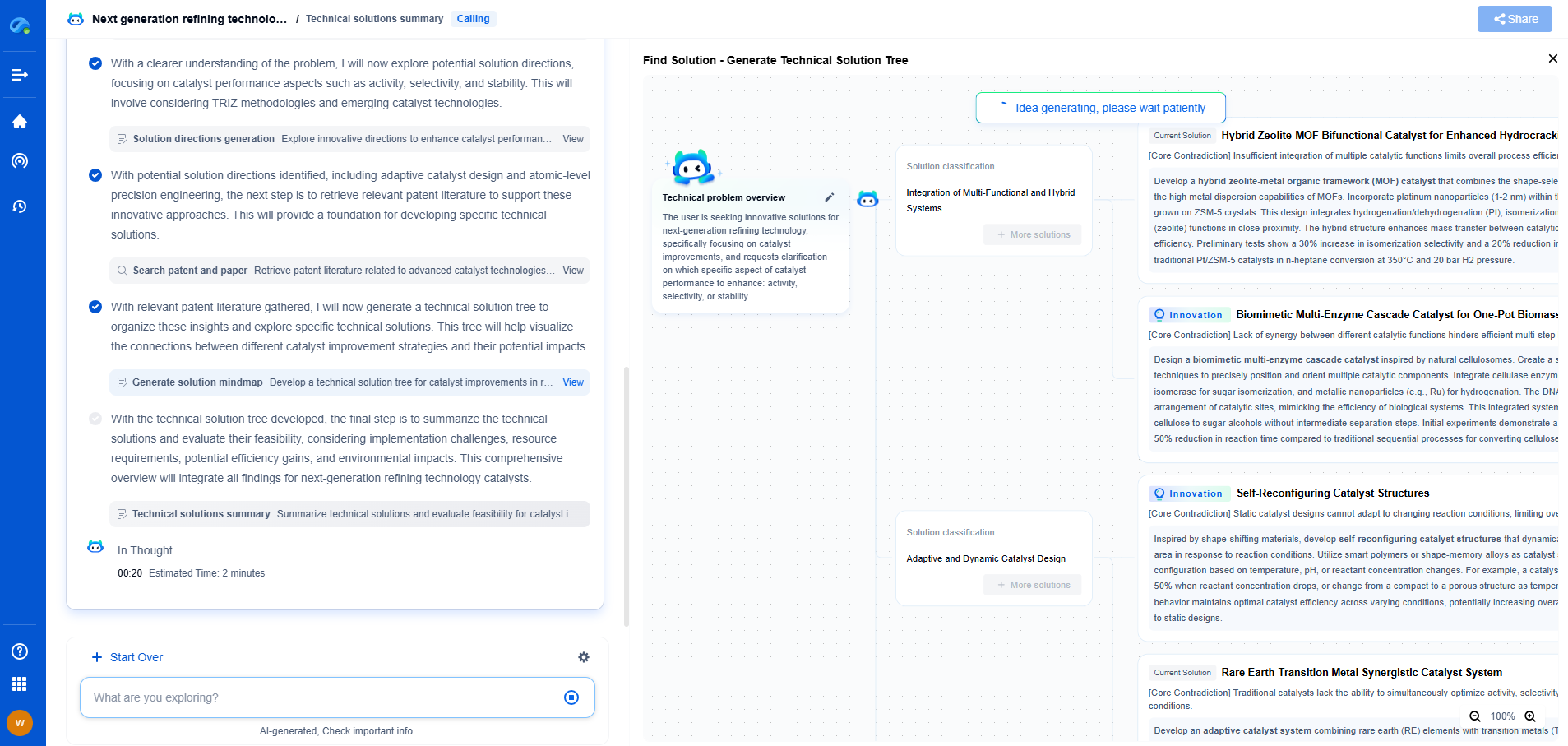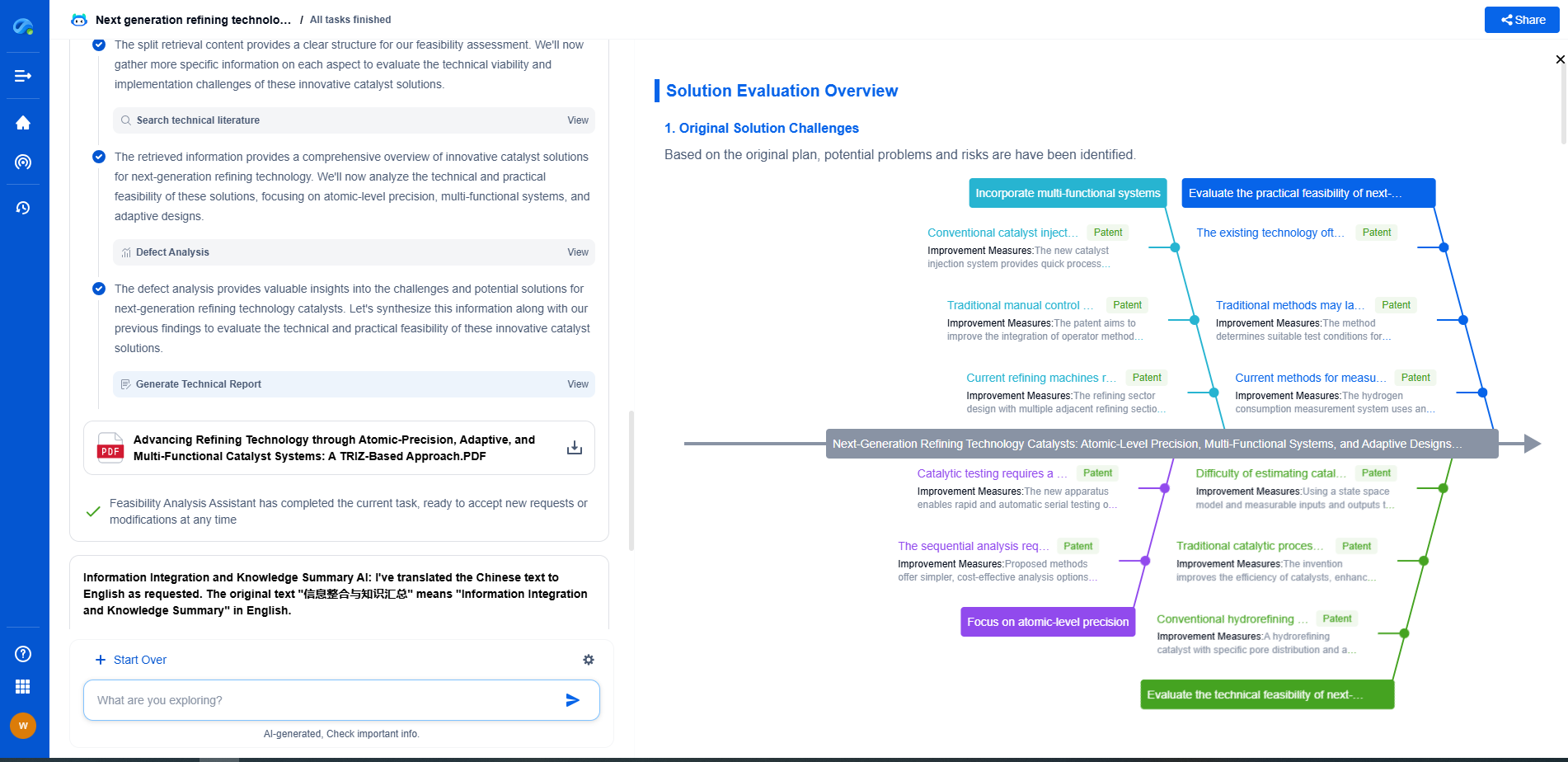Key design considerations in ultrapure water systems for fabs
JUL 25, 2025 |
Understanding Ultrapure Water Requirements
The first step in designing an ultrapure water system is to understand the specific water quality requirements of the fab. These requirements can vary significantly depending on the processes involved and the technology node being manufactured. Fabs typically require water with resistivity close to 18.2 megohm-cm, low levels of dissolved organic carbon, and minimal presence of particles, ions, and microorganisms. A comprehensive analysis of these requirements will guide the design process and help determine the necessary treatment technologies and system components.
System Capacity and Scalability
Designing a system that can handle the current water demand and accommodate future growth is crucial. Accurate forecasting of water usage is necessary to ensure the system is neither under nor overdesigned. It's also essential to consider potential expansions or technology upgrades that may affect water usage. Incorporating scalability into the design allows the system to adapt to changing demands without significant overhauls, ensuring cost-effectiveness and operational efficiency over the long term.
Selecting Appropriate Treatment Technologies
The choice of treatment technologies is fundamental to achieving the desired water quality. Commonly used technologies include filtration, reverse osmosis, deionization, UV oxidation, and ultrafiltration. Each technology has its strengths and limitations, and they are often used in combination to achieve the highest purity levels. The selection process should consider factors such as removal efficiency, operational costs, maintenance requirements, and system compatibility.
System Reliability and Redundancy
Reliability is non-negotiable in ultrapure water systems, as any downtime can lead to costly production halts. Incorporating redundancy into critical system components ensures continuous operation in the event of a failure. Redundant pumps, filters, and power supplies can provide a backup that keeps the system running smoothly. Regular maintenance schedules and real-time monitoring systems also play a vital role in maintaining system reliability.
Material Selection and Component Compatibility
The materials used in ultrapure water systems must be carefully chosen to prevent contamination and ensure longevity. Non-reactive materials such as stainless steel, high-purity plastics, and specialized coatings are commonly used to construct system components. Compatibility between different materials and components is also essential to prevent any adverse reactions that could compromise water purity.
Contamination Control Strategies
Controlling contamination is a critical aspect of maintaining ultrapure water quality. This involves strategies for minimizing the introduction of contaminants at all stages of the system, from water intake to distribution. Cleanroom protocols, proper handling techniques, and stringent operational procedures must be implemented to reduce the risk of contamination. Additionally, monitoring systems should be in place to detect any deviations in water quality promptly.
Energy Efficiency and Environmental Considerations
Ultrapure water systems can be energy-intensive, so energy efficiency should be a crucial consideration in the design process. Selecting energy-efficient pumps, optimizing system layout, and employing energy recovery techniques can significantly reduce the system's energy footprint. Moreover, considering environmental impacts, such as waste management and chemical usage, can help fabs align with sustainability goals and reduce their overall environmental impact.
Automation and Control Systems
Advanced automation and control systems enable precise monitoring and management of ultrapure water systems. These systems provide real-time data on water quality, system performance, and maintenance needs, allowing for proactive decision-making and quick response to any issues. Automated controls can optimize system operation, minimize human error, and enhance overall efficiency and reliability.
Conclusion
Designing an ultrapure water system for a fab involves a comprehensive understanding of water quality requirements, system capacity, and the selection of appropriate technologies. By ensuring reliability, material compatibility, contamination control, and energy efficiency, fabs can maintain high standards of water purity essential for semiconductor manufacturing. Through thoughtful design and careful consideration of these key factors, ultrapure water systems can support the demanding requirements of modern fabs, contributing to overall productivity and success.
From next-generation membrane materials to high-efficiency separation processes for pharmaceuticals, water treatment, food processing, or energy systems, the filtration & separation industry is rapidly evolving with a surge in material innovation, microstructure design, and process optimization.
Patsnap Eureka, our intelligent AI assistant built for R&D professionals in high-tech sectors, empowers you with real-time expert-level analysis, technology roadmap exploration, and strategic mapping of core patents—all within a seamless, user-friendly interface.
Whether you're designing the next high-throughput filter, optimizing nanostructured surfaces, or exploring new separation media for emerging industries—Patsnap Eureka gives you AI-driven insights in seconds, helping you move from ideation to innovation with confidence.
🚀 Start your free trial today and experience how Eureka transforms filtration innovation—from reactive to predictive.
- R&D
- Intellectual Property
- Life Sciences
- Materials
- Tech Scout
- Unparalleled Data Quality
- Higher Quality Content
- 60% Fewer Hallucinations
Browse by: Latest US Patents, China's latest patents, Technical Efficacy Thesaurus, Application Domain, Technology Topic, Popular Technical Reports.
© 2025 PatSnap. All rights reserved.Legal|Privacy policy|Modern Slavery Act Transparency Statement|Sitemap|About US| Contact US: help@patsnap.com

